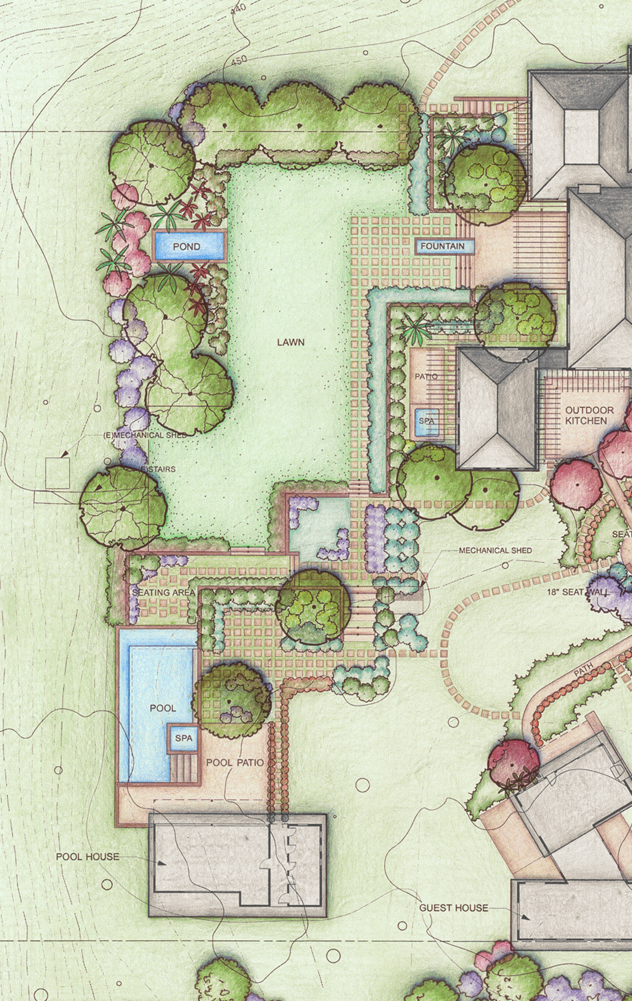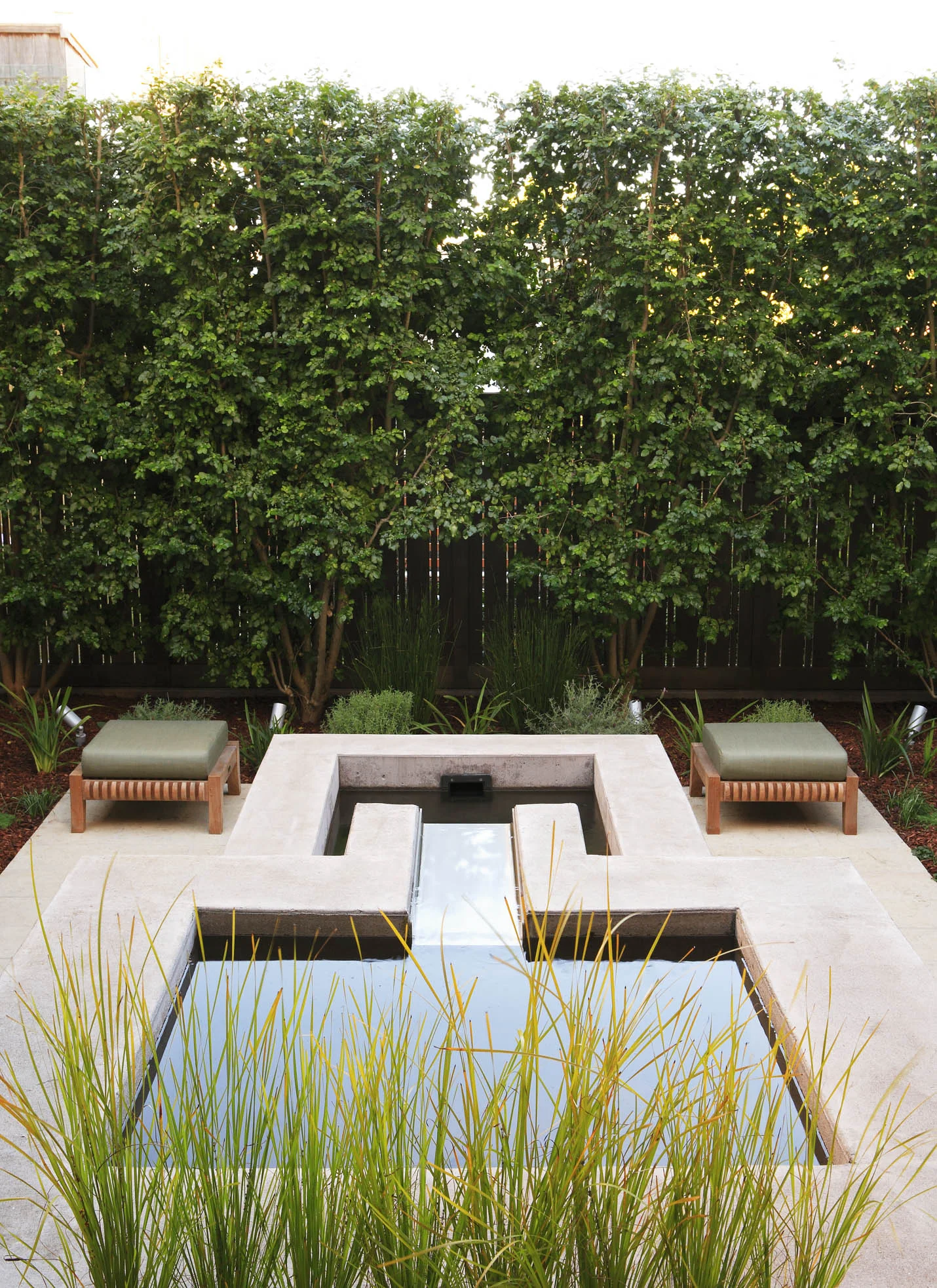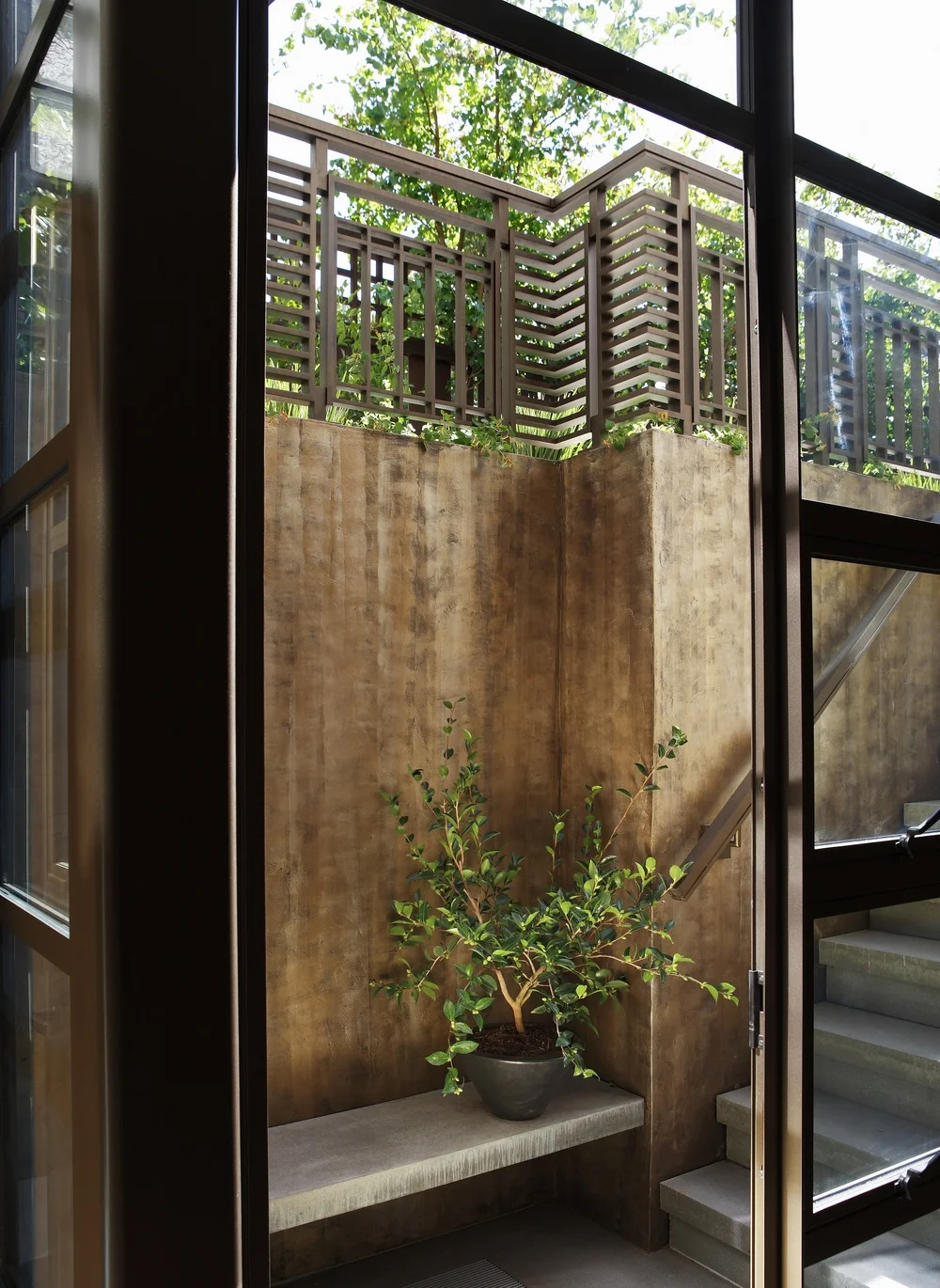Garden Geometries: Grid/Offset Grid
By Vera Gates
The grid is one of the simplest of design methodologies and a great way to get a design started. Most gardens are laid out over an underlying grid. This is a great ordering system for organizing space and circulation. It is easily measurable and manageable as a design tool.
The grid is most interesting when not entirely visible and when it is articulated at varying scales. It can emerge and disappear throughout the garden. The form is comprehensible and interesting, but not boring. The design can take on an additive or subtractive quality, depending upon how the grid is interpreted.
Typically, the grid is offset and parallel with the house. We love it when there are structures set at various angles, as this creates opportunity for an offset grid and a dynamic shift in perception of the site. A shifted grid creates the illusion of a more expansive space.
The grid pattern gets very interesting when you take it into three dimensions. Forms become a study in ascending and descending forms. Such a design works well where there are grade changes to be made and connections to the interior space need to be made on a number of elevational levels. The forms can literally descend into the earth as a negative space and arise from the earth as articulated terraces and monumental planters.





